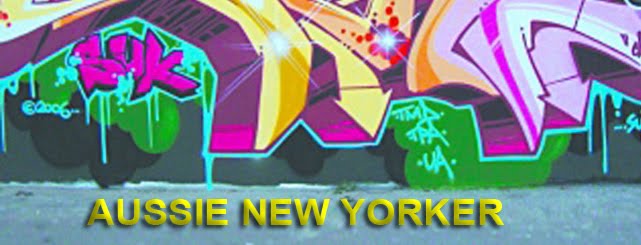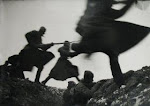Agrarian Leader, Zapata
Rivera never hid his disdain for capitalism or fervent love of the Communist ideal. He and his wife the incredibly beautiful and talented Frida Kahlo, were always leading workers' demonstrations in Mexico and decrying US expansionism in Latin America. And yet the United States, ever the capitalist pinup child despite the Depression, remained fascinated by this ugly mammoth of a man and his art. Interestingly, MOMA's second-ever exhibition focused on Rivera in 1931/32 and it had the highest attendance of any recorded exhibition until that time.
MOMA brought Rivera to New York 6 weeks before the exhibition and set him up in a massive space to create murals without walls. Rivera produced five "portable murals" depicting Mexican life, class inequality and revolution. He then added an additional three murals about the Depression-era New York. This is the first time in 80 years that all eight murals have been reunited.
Indian Warrior
The Uprising
Electric Power
Frozen Assets
But the part that interested me the most was the fractured relationship between Rivera and the Rockefeller family. Abby Aldrich Rockefeller was actually one of the founders of MOMA and a pivotal player in getting Rivera to New York in the first place. In 1933, John D. Rockefeller Jr commissioned Rivera to create a mural for his work-in-progress Rockefeller Centre. The story goes that both Matisse and Picasso were both approached about creating a public work of art before Rivera was. Matisse declined and Picasso never replied!
Rivera did a sketch of what he wanted to create, Man at the Crossroads, which was to depict the social, political, industrial and scientific possibilities of the twentieth century. But what he painted was very different to the sketch. He decided to include a portrait of Lenin on one side and a martini-swilling Rockefeller partying with a prostitute on the other side. Given this was the era of Prohibition in the US and the cult of Stalin in Russia, The controversy of it all proved too much for the Rockefeller family and one of the strangest patron-artist relationships came to an end.
How the rest of this story played out is showcased in some wonderful letters. There is the very polite request from Nelson Rockefeller to "substitute the face of some unknown man where Lenin's face now appears," whilst still remaining "enthusiastic" about the work Rivera was doing. "The piece is beautifully painted, but it....might very easily seriously offend a great many people."
Even the lawyer's letter is polite, if not to the point. "We cannot but feel that you have taken advantage of the situation to do things that were never contemplated by either of us at the time our contract was made. We feel, therefore, that there should be no hesitation on your part to make such changes as are necessary...."
Of course, history shows us that Rivera refused to comply and ultimately, the mural was removed and destroyed.
Mural covered with canvas, May 1933
Rivera called this "cultural vandalism" and promptly re-created the mural in Mexico city with the funds he had received from the Rockefeller commission.
images: (1-5, 11) moma, (6) this cultural christian, (7) flickr, (8-10) mine taken at moma





































No comments:
Post a Comment